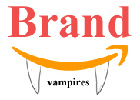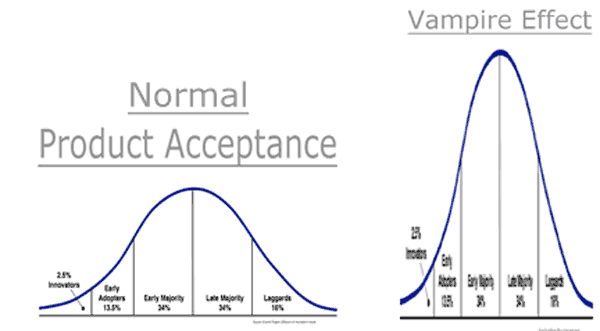“Never engage the same enemy for too long, or he will adapt to your tactics.” – Carl von Clausewitz, military theorist
The Long Tail Of Everything
When I was a Director of Ecommerce, I noticed something fascinating. At the end of every year I created a Year End Report. Creating deep dives into our nine categories, I noticed that no matter how small I cut the data there was always a Pareto distribution. There was always an 80/20 rule.
The 80/20 Rule Of Everything
Pareto distribution or a “power log” is another name for the 80/20 rule, a well-known marketing rule. The 80/20 rule says that 80% of your website’s gross and net will come from 20% of your Stock Keeping Units (SKUs). A handful of your products will contribute most of your sales and profits.
Pareto’s Smooth Distribution
I started thinking of 80/20 data like fractals. Fractals describe the apparent rough math of natural things like coastlines. What appears rough at a distance becomes smooth and repeating. On closer inspection, any coastline becomes a fractal.
Same is true for your Internet analytics. Inside the apparent randomness of your traffic, conversion and abandonment data is the smooth bottom of a Pareto distribution. Every Key Performance Indicator has a Pareto distribution:
- 20% of your referring sources contribute 80% of your traffic.
- 20% of your cart abandonments account for 80% of your lost revenue.
- 20% of your visitors are generating 80% of your website’s purchases, visits and contributions.
Why do Pareto distributions form?
Internet marketers are more weathermen and women than marketers. We use intuition and statistics to predict, merchandise and design. Much of what will actually happen is unknowable until the Internet’s rolling NOW creates fronts, storms and low-pressure systems.
Reasons clusters become long tail Pareto distributions:
- Macro signals such as culture, advertising and events feed clustering.
- We buy, read, or watch the same things at the same times (less and less, but still there).
- Micro signals such as Word of Mouth (WOM) and social shopping help create clusters.
- Retailers read data and merchandise to reinforce clusters.
- Meme creation, cultural ideas that become stronger with repetition.
- Memes act like networks rewarding hub creation where the “rich get richer”.
Recognizing Clusters
Velocity is how to identify clusters as they form. Calculate velocity by dividing sales by time. If you sell 1 golden widget a day every day for a month, then your monthly velocity of golden widgets is 1 per day or 30 a month. Let’s leave seasonal effects aside for a moment.
If your new silver widget sells 2 per day every day for a month, then you can calculate the velocity of this simple 2 product “category” as 3 per day (1 golden widget, 2 silver widgets per day).
If your new bronze widget starts at 1 per day then 2 per day then 6 per day, a cluster is forming. At 6 per day, your new bronze widget is moving twice as fast as the category average and is becoming part of your “head”, one of if not the most popular widget you sell.
James Bond’s Asymmetrical Marketing
** Spoiler Alert. If you haven’t seen Skyfall yet, you might want to skip this paragraph. **
Spies think differently. They must create feints and dodges, or their enemies will know how to defeat them. In Skyfall, the new Bond thriller movie, there is a typical use of asymmetrical marketing. When Bond can’t hit the broad side of a barn, fails his re-institution examination and is approved anyway, Bond and M create asymmetrical marketing, lowering expectations to smoke out their enemy.
Amazon’s Asymmetrical Marketing
Symmetrical marketing wants to maximize scale, velocity and Google’s “rich get richer” algorithm by feeding the monster. Internet retailers “feed the monster” with promotions such as Free Shipping, Buy One Get One Free and % off. These are well worn paths now. These are examples of common symmetrical Internet marketing.
There is a big problem with symmetrical Internet marketing, and it can be described in a single word – AMAZON. At the Raleigh Internet Summit Conference this week, I heard an interesting report. Amazon’s algorithm was battling Sears on a hot product, a product so hot a clear cluster was forming. Amazon’s algorithm changed prices on this product 9 times in one day, beating Sears with each change.
Sears is the definition of a symmetrical marketer. Sears has large distribution centers, lots of physical inventory and prices that are hard to manipulate. Amazon is designed to be a Lego block with variable pricing that is adaptable to any situation. Amazon has three goals in mind:
- Win Google page 1 listings in bulk.
- Control market pricing on any product with velocity.
- Create a platform for asymmetrical marketing and price arbitrage.

Brand Vampires
Amazon is the head online brand vampire. Talk to any popular brand, any brand with velocity, and ask them about Amazon. As a group they HATE Amazon, especially those whose sales are dependent on Amazon. Amazon is the online Wal-Mart – powerful enough to make markets and kill brands.
Brand Marketers hate Amazon because every sale to the largest Internet retailer puts one more nail in their brand’s coffin. As with any vampire, Amazon doesn’t kill its host right off. Amazon accelerates a brand’s bell curve of market acceptance. Instead of a gentle bell curve, Amazon makes a brand’s acceptance line go almost straight up as Amazon’s traffic and link dominance kick a brand’s acceptance into overdrive.

Amazon is not in the “nurture” business. Amazon is in the conversion business. Amazon doesn’t care if they make money on your popular brand. In fact, its mission is to run your brand up and then right back down the product acceptance bell curve so fast your brand spins like a top (see vampire effect chart above).
Amazon’s algorithm controls market pricing for some simple reasons:
- Because they can (their massive Internet scale has many advantages).
- Because controlling velocity and market prices creates the biggest feint in Internet retailing (see below for explanation).
- Because controlling market pricing and velocity is key to Amazon’s real goal, asymmetrical marketing with the highly profitable Amazon Partner Network.
Amazon controls market prices because control is key to their real profit center – the Amazon Partner Network. Setting market prices means Amazon is the de facto standard for price checks and the showrooming traffic price checks bring. The irony Amazon creates by becoming the biggest price-checking engine on products it could care less about selling hasn’t escaped me.
Amazon is rolling up the market, and they are willing to pay any price to continue to feed the highly profitable rest of their ecosystem. Amazon uses your website’s popular products as loss leaders. Attempt to play Amazon, an asymmetrical player, with a symmetrical Internet marketing approach and you LOSE.
Winning With Asymmetrical Internet Marketing
I started the ScentTrail Marketing blog in 2007 with a single purpose – to learn how Google’s and Amazon’s algorithms work. I selected the term “scenttrail” because it only had 4 documents returned in 2007 and because I could write the marketing definitions for the term.
There were marketers who were discussing ScentTrail, the breadcrumbs we leave for recognition we are where we are supposed to be, but there was no dominant owner of the term. “Scenttrail” was a long tail keyword with little search demand and few competitors. That didn’t last long.
As I began to “put impressions into the marketplace” to quote a Warner Brothers Internet marketer from the Expion Social Marketing conference, the keyword “ScentTrail” gained traffic and pages. When we hit 30,000 documents returned on Google, Amazon’s algorithm fired its first ad.
“Looking for books on ScentTrail, Go to Amazon” was the generic business rule ad they tested. Business rules are coded instructions usually in the form of “if, then” statements such as, “If there are at least 30,000 documents returned, then fire a generic ad.”
The first “ScentTrail” Amazon ad test clearly failed (didn’t bring in enough money). After four days, the ad went away. Then a woman wrote a book about perfume ScentTrail, and the smack down competition for Google position was on in earnest.
ScentTrail Marketing stood toe to toe with Amazon and fought for Google’s heart and attention. This was pre-Google float, so we were playing for absolute positioning on the term, and for several months my marketing blog was losing.
Here is what I did to reclaim the #1 position (currently #2 behind my @ScentTrail twitter page):
- Wrote specific ScentTrail defining content such as:
- ScentTrail Manifesto.
- ScentTrail Definition.
- What is ScentTrail?.
- Drove social links into that new content.
- Some of the social links were picked up.
- Would randomly Tweet or share on Facebook.
- Strengthened internal linking on ScentTrail.
- Added ScentTrail anchor text links on a few related pages (this could be considered “over optimization” now but worked then).
- Drove links randomly from emails and other blog posts to ScentTrail pages.
- Created content at a withering pace (considering there wasn’t much money in the term for Amazon).
- Faster Pace – created more social shares than Amazon or the perfume writer.
- Outlasted, out-wrote and out-linked them over the long term.
- Played tortoise to their hare.
- Didn’t panic, stayed calm and carried on.
How to Easily Create Asymmetrical Marketing
Asymmetrical marketing sounds more complicated than it is. Asymmetrical is a fancy way of saying, “Do things differently than your competitors.” Here are a few of my favorite asymmetrical marketing tactics:
- Create new SKUs by merchandising popular products together in a unique “basket” approach.
- Create unique content, tell better stories about your products that have velocity.
- Form a User Generated Content (UGC) tribe around your products with reviews , polls, contest and games.
- Focus email marketing to win the traffic wars on your products. Only try to win for a day, then for 2 days and so on.
- Add a new points currency via gamification (the best, since these incentives create a new currency YOU control, and gamification is cheaper than other ideas).
- Add a loyalty program (earn points, VIP pricing, VIP offers).
- Free Prize Inside – use the Cracker Jack model and give something unique to reward purchase from you rather than someone else.
Asymmetrical Internet Marketing and KPIs
Testing is the key to all great Internet marketing, but testing tends to reward incremental improvements. Asymmetrical Internet marketing needs more time and different Key Performance Indicators (KPIs). Here are important asymmetrical KPIs:
- New to file customers gained.
- New engagement (new visits or purchases) from lapsed customers.
- Traffic gains from new sources.
- Traffic gains on new terms.
- Traffic gains on old terms from new sources.
- Inbound links gained.
- Increase in core heuristic measures (time on, pages viewed, return visits).
- Soft conversions gained (list signups = a “soft” conversion).
- Cash conversions gained.
- ROI (cost of asymmetrical vs. gross benefit, and be generous).
If you run your business with $3 to $1 as your lowest Internet marketing ROI, then you should lower it for your asymmetrical efforts. Lower your ROI to as close to $1 to $1 as you are comfortable operating. Treat your asymmetrical Internet marketing like junk bonds. Expect most will fail outright, and feed and nurture any asymmetrical effort that demonstrates strong ROI.
Broaden your definition of Internet marketing success. If your competitors are tied in knots and don’t know what you will do next, count that as a big victory for your asymmetrical Internet marketing. When in doubt, do whatever is causing the doubt again and compare results. Blow on any ember and keep increasing the pace of your asymmetrical marketing (more, faster, better).
Think like James Bond, and your asymmetrical Internet marketing will increase your chances of winning new hearts and minds, vexing competitors and increasing market share for the good guys.
Join and Follow Atlantic BT
Follow @Atlanticbt on Twitter.
Like Atlantic Business Technologies on Facebook.
Follow @Scenttrail (me) on Twitter.









